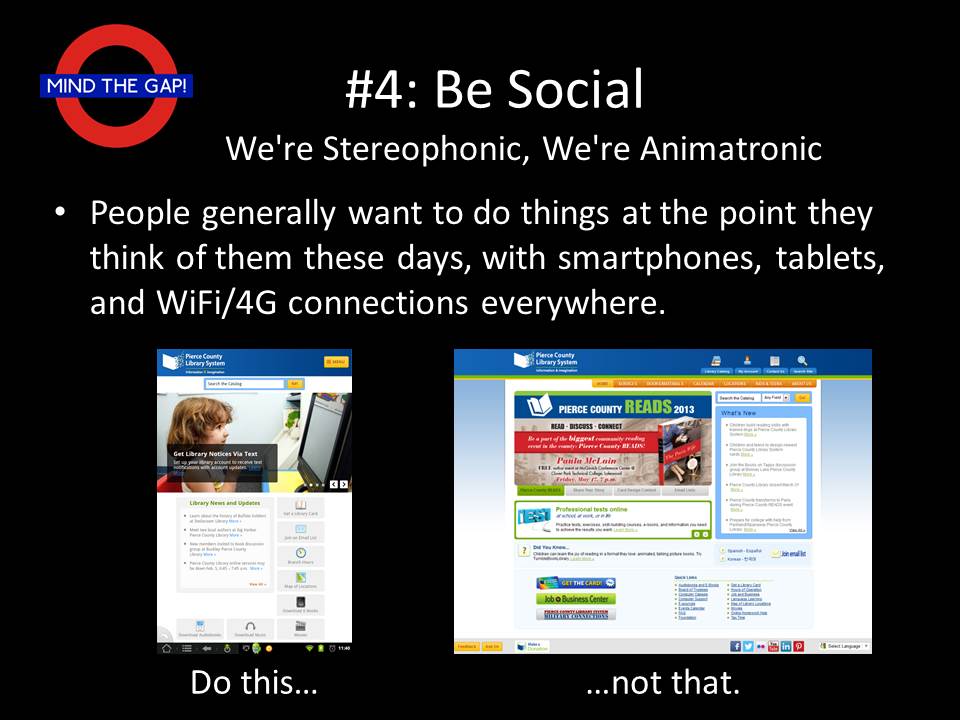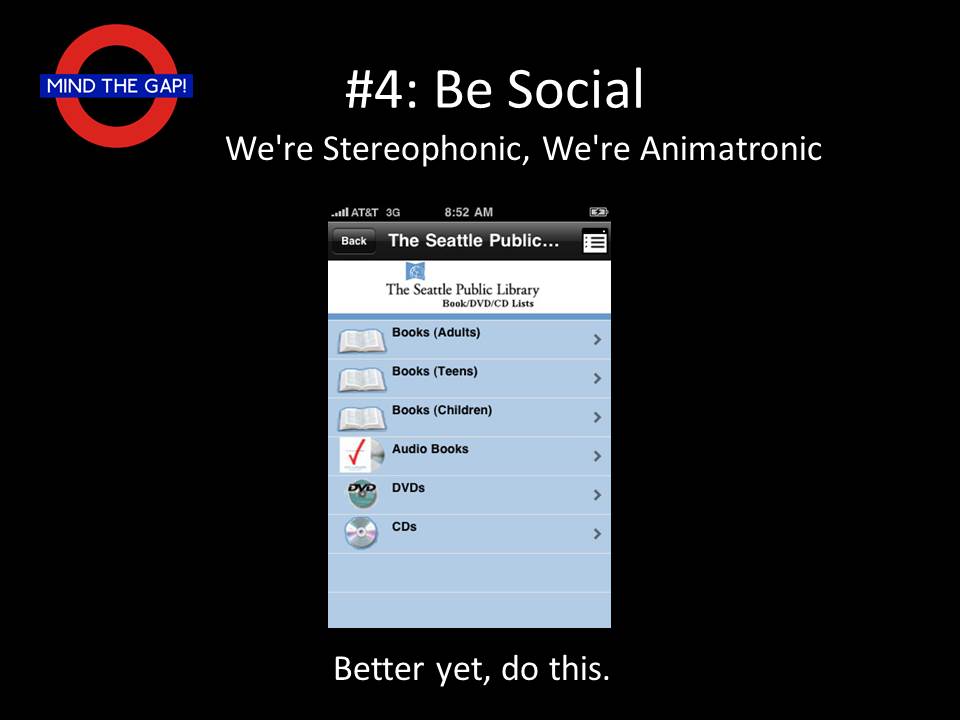

The world is increasingly more connected, but a significant amount of the connection comes from things that are not desktop computers. Mobile devicees such as e-readers, tablets, and smartphpones are increasingly part of the landscape of the technology-connected world. (Memo from your future self: About 20 percent of people solely have Internet access through their smartphone in 2015.) An institution that cannot adapt to the fact that more and more people will be accessing services and websites through their mobile devices and apps is going to end up in trouble. Good design principles will help avoid problems, but in the library world, a lot of our services will be provided by outside vendors, and they may or may not adhere to good principles in their designs. In a perfect world, libraries would have the right skill set to program, own, and design all of their applications to be done right, but...
…as one might guess, this is rarely the case, as manylibraries can't offer enough in salary or benefits to attract top-flight IT personnel to help them with these matters. And there's a lot of privacy and confidentality issues that would hae to be negotiated for an open source group or volunteers to work on an application or website or otherwise do things that would normally be taken by paid staff. Things get messy quickly.